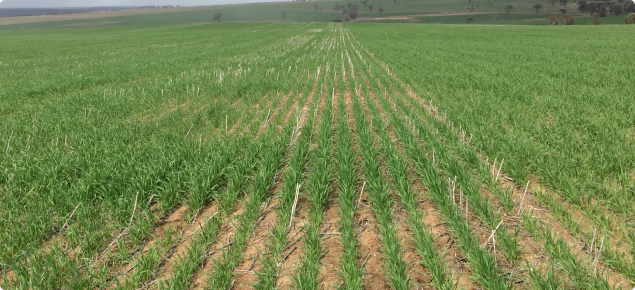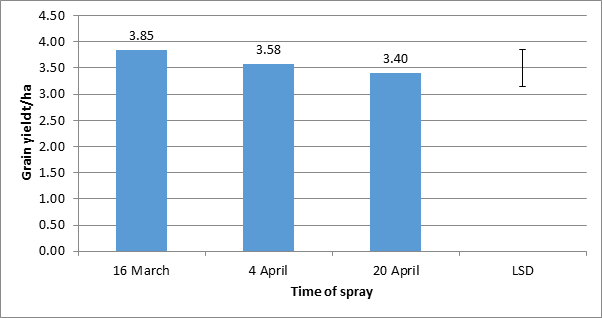Background
Jerramungup received 66mm of rain over 10 and 11 February 2017. Post this rain event an opportunistic spray trial was implemented comparing three different times of weed removal with the spray dates, 16 March, 4 April and 20 April. Soil nitrogen and moisture, and crop yield were measured.
In 2016, the site was in canola and prior to the first time of spray there were very low weed numbers. At the last time of spray unsprayed plots had greater than 30% coverage of weeds with the main weeds being marshmallow, goosefoot, clover, volunteer canola, melons (Afghan and paddy) and stinking lovegrass.
Soil cores were taken to 40cm at 10cm increments on 20 April at the time of last spray application. Soil moisture at 0-10cm was 12% for the first time of spray, 11% for the second and 10% for the third (Figure 1). There was a significant difference between the first and third time of spray. Deeper layers showed no difference in soil water content due to soil type variation between replicates. There was no difference in 0-10cm mineral nitrogen between the three different times of spraying.
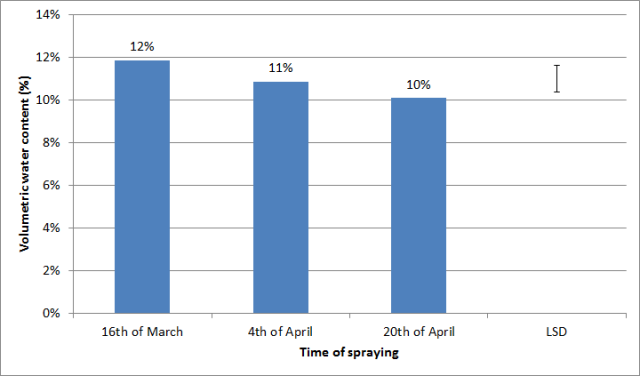
Trojan wheat was sown on 7 May. Establishment counts were very similar between each time of spray with 107 plants/m2 (first time of spray), 111 plants/m2 (second time of spray) and 112 plants/m2 (third time of spray). However, tiller and head counts declined from the first time of spray to the second and the third times (Figure 2).
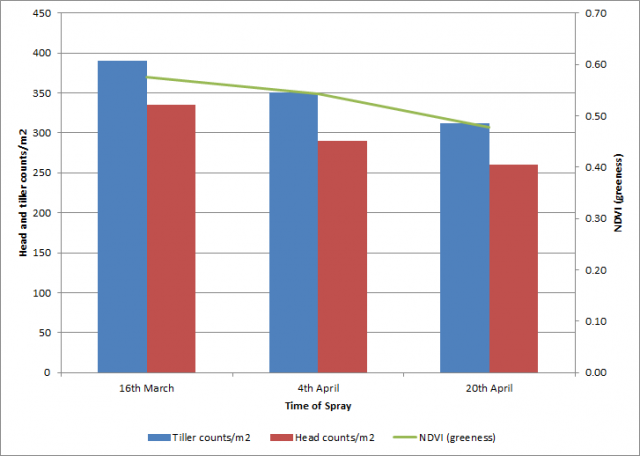
NDVI (normalised difference vegetation index) were taken on the 12 July and showed very similar results for the first and second time of spray, with 0.55 and 0.54 respectively, but the third time of spray was slightly lower with a reading of 0.48 (Figure 2).
Yield results
Grain yields declined with delayed spraying but were not significant at the 5% level. Yields were 3.85, 3.58 and 3.40t/ha for the first to last spray timings (Figure 3).
A difference of 450kg/ha between the first and third time of spray was noticeable considering the site had good weed management and did not suffer moisture stress until spring, as indicated by the soil moisture probe located near the site (Figure 4).
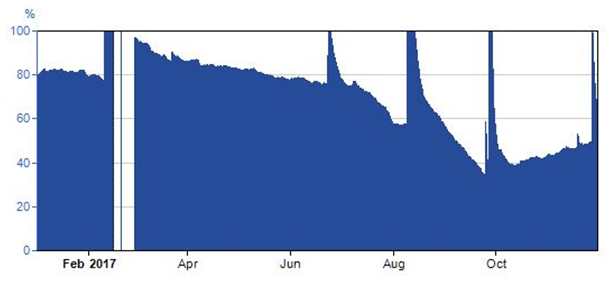
Similar trials were implemented in Merredin and Esperance. Merredin had significant results with 1.04t/ha in the unsprayed treatment versus 1.33t/ha in the sprayed treatment (only two treatments). In the wet 2017 growing season in Esperance, there was no significant yield response.
Summary
With a shift to more summer rainfall this series of trials demonstrates it is crucial to remove weeds early in low rainfall areas and seasons. Although grain yield response was not significant in this Jerramungup experiment, there are benefits to controlling weeds in medium rainfall areas. Grain yield responses are less likely from early summer weed control in high rainfall areas. Results from summer weed control can be dependent on growing season water supply in response to rainfall patterns.

